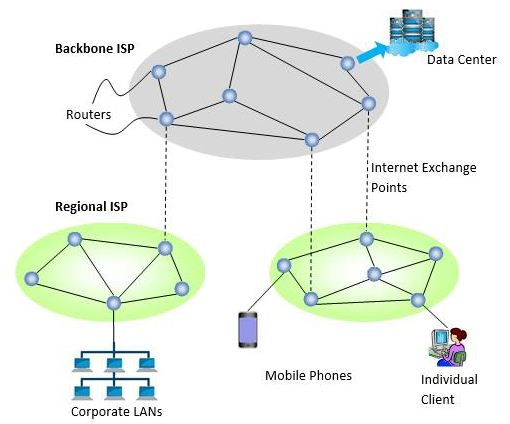
 Data Structure
Data Structure Networking
Networking RDBMS
RDBMS Operating System
Operating System Java
Java MS Excel
MS Excel iOS
iOS HTML
HTML CSS
CSS Android
Android Python
Python C Programming
C Programming C++
C++ C#
C# MongoDB
MongoDB MySQL
MySQL Javascript
Javascript PHP
PHP
- Selected Reading
- UPSC IAS Exams Notes
- Developer's Best Practices
- Questions and Answers
- Effective Resume Writing
- HR Interview Questions
- Computer Glossary
- Who is Who
Architecture of the Internet
The architecture of the Internet is ever-changing due to continuous changes in the technologies as well as the nature of the service provided. The heterogeneity and vastness of the Internet make it difficult to describe every aspect of its architecture.
The overall architecture can be described in three levels −
- Backbone ISP (Internet Service Provider)
- Regional ISPs
- Clients
The following diagram shows the three levels −

Backbone ISP (Internet Service Provider) − Backbone ISPs are large international backbone networks. They are equipped with thousands of routers and store enormous amounts of information in data centers, connected through high bandwidth fiber optic links. Everyone needs to connect with a backbone ISP to access the entire Internet.
There are different ways through which a client can connect to the ISP. A commonly used way is DSL (Digital Subscriber Line) which reuses the telephone connection of the user for transmission of digital data. The user uses a dial-up connection instead of the telephone call. Connectivity is also done by sending signals over cable TV system that reuses unused cable TV channels for data transmission. For high-speed Internet access, the connectivity can be done through FTTH (Fiber to the Home), that uses optical fibers for transmitting data. Nowadays, most Internet access is done through the wireless connection to mobile phones from fixed subscribers, who transmit data within their coverage area.

